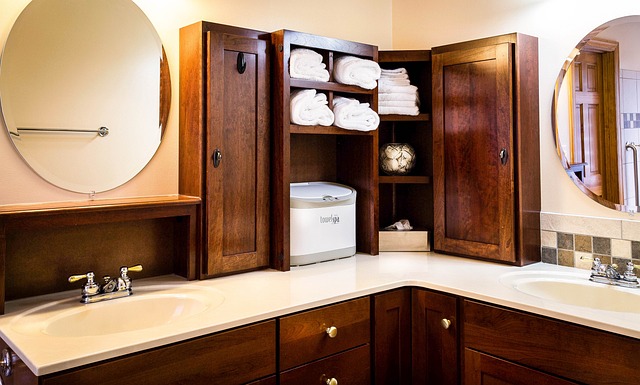Organizing Medications And First Aid Essentials
There are some affiliate links below, but they are all products I highly recommend. For more info, view my disclosure here.
Are you tired of searching through cluttered drawers and cabinets to find the right medication or first aid supply? Look no further!
In this article, we will guide you through the process of organizing your medications and first aid essentials, helping you create a system that is efficient and easy to maintain.
By assessing your needs, choosing the right storage solutions, and establishing a system for expiration dates and refills, you’ll have everything you need at your fingertips in no time.
So let’s get started and create a well-organized and accessible medication and first aid kit!
Assessing Your Needs and Inventory
Before you can begin organizing your medications and first aid essentials, it’s important to assess your needs and take inventory of what you already have.
Start by gathering all your medications and first aid supplies in one place. Check the expiration dates on your medications and discard any that are past their expiration date. Make a list of the medications you currently have and note down any that need to be replenished.
Next, go through your first aid kit and check the condition of all the items. Replace any expired or damaged items with new ones. Take note of any essential items that are missing from your kit and add them to your shopping list.
It’s also important to consider any specific medical conditions or allergies that you or your family members may have. If necessary, consult with your healthcare provider to ensure you have the appropriate medications and supplies for any specific needs.
Choosing the Right Storage Solutions
To choose the right storage solutions, you should consider the size and accessibility of your containers and shelves.
When it comes to organizing your medications and first aid essentials, it’s important to have a system that allows you to easily find what you need in times of emergency.
Start by assessing the size of your containers and shelves. Make sure they are big enough to accommodate all your supplies without overcrowding.
It’s also crucial to consider the accessibility of your storage solutions. You want to be able to quickly grab what you need without any hassle.
Opt for containers with clear lids or labels, so you can easily identify their contents. Additionally, choose shelves that are easy to reach and arrange your supplies in a logical order.
This will save you time and effort when you’re in a hurry. So, take the time to carefully select storage solutions that fit your needs, and you’ll have a well-organized and accessible medication and first aid essentials storage system.
Sorting and Labeling Medications and Supplies
When sorting and labeling your supplies, it’s important to use clear and descriptive labels for easy identification. This applies especially to your medications and first aid essentials.
By using labels that clearly state the contents of each container, you can quickly find what you need during an emergency or when you’re feeling unwell.
Start by gathering all your medications and first aid supplies in one place. Check the expiration dates and discard any expired items. Next, group similar items together. For example, place all your bandages in one container and all your pain relievers in another. This will make it easier to find specific items when you need them.
Once you have your supplies sorted, it’s time to label them. Use a permanent marker or label maker to write the name of the item on each container. Be specific and include any important details, such as the dosage or strength of medications. This will not only help you find what you need quickly, but it will also ensure that others can easily identify the contents of each container.
Remember to update your labels whenever you add new supplies or when the contents of a container change. This will help you maintain an organized and easily accessible collection of medications and first aid essentials.
Establishing a System for Expiration Dates and Refills
Establishing a system for expiration dates and refills is crucial to ensure that your medications and supplies are always up to date and readily available. When it comes to your health, it is essential to stay organized and on top of things.
Start by checking the expiration dates on all your medications and supplies. Dispose of anything that is expired or no longer safe to use.
Create a schedule or reminder system to keep track of when your medications need to be refilled. This could be as simple as setting a reminder on your phone or using a pill organizer with designated compartments for each day of the week.
Additionally, it is important to keep an inventory of your supplies, such as bandages, gauze, and ointments. Regularly check your inventory and restock as needed, making sure to discard any items that are damaged or expired.
Creating an Emergency Kit
Creating an emergency kit is crucial for ensuring that you have all the necessary supplies in case of an unexpected event or disaster. You never know when an emergency might strike, so it’s important to be prepared.
Start by gathering essential items such as food, water, and medication. Make sure you have enough non-perishable food to last at least three days, along with a supply of clean drinking water. Don’t forget to include any necessary prescription medications and over-the-counter remedies for common ailments.
It’s also important to have a first aid kit stocked with bandages, antiseptic ointments, and other medical supplies. Additionally, include important documents such as identification cards, insurance information, and contact numbers for family members and emergency services.
Maintaining and Updating Your Organization System
To keep your emergency kit up to date and organized, make sure to regularly check and replace any expired or depleted supplies. It’s important to stay on top of your organization system to ensure that you are prepared for any emergency situation.
Start by setting a reminder on your phone or calendar to check your emergency kit every six months. Go through each item, checking expiration dates on medications, ointments, and creams. Replace any expired medications and dispose of them properly.
It’s also essential to check the batteries in your flashlight and portable radio, making sure they are still working or replacing them if necessary. Take inventory of your first aid essentials, such as bandages, gauze, and adhesive tape. Restock any depleted supplies to ensure you have enough for emergencies.
Lastly, keep your emergency kit in a designated place that is easily accessible and known to all family members. Regularly updating and organizing your emergency kit will give you peace of mind knowing that you are ready to handle any unexpected situation that may arise.






